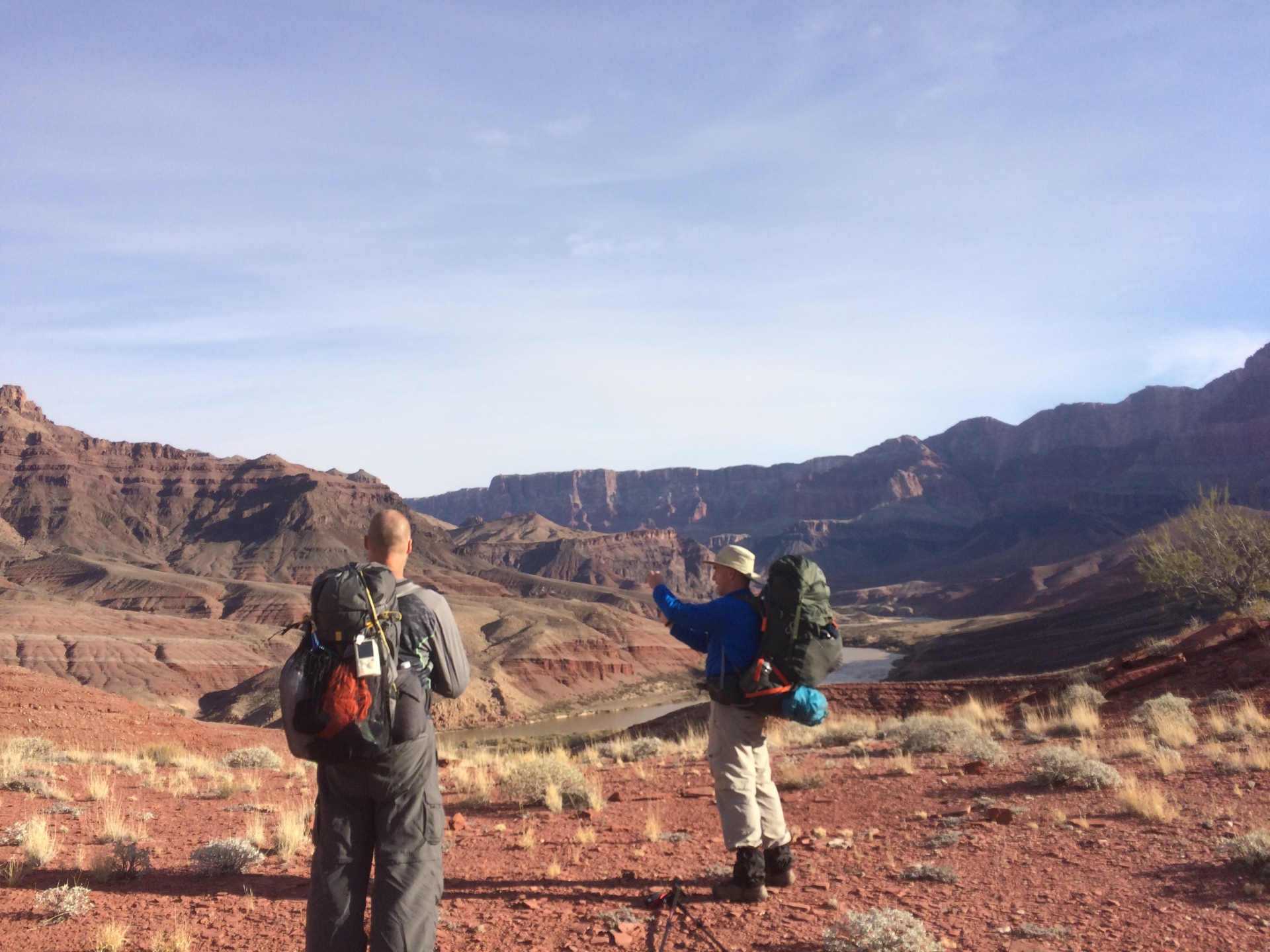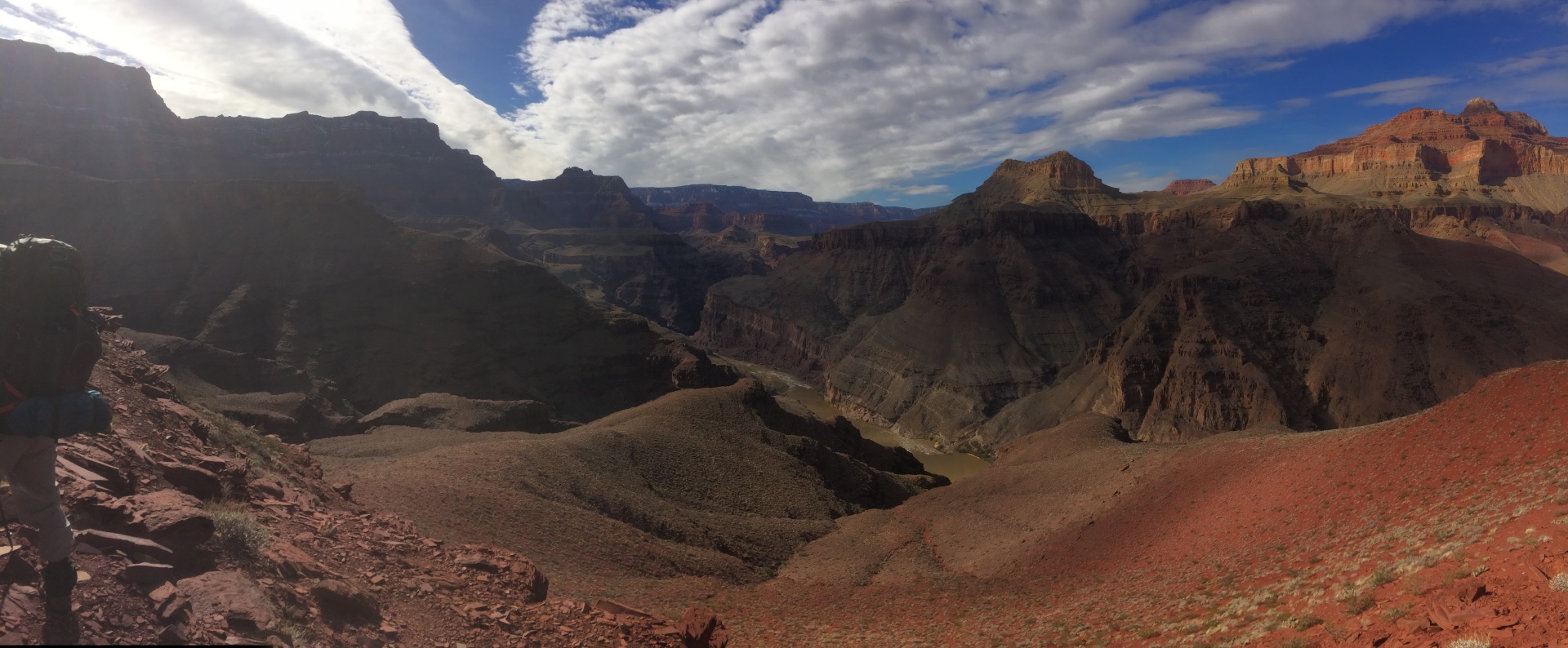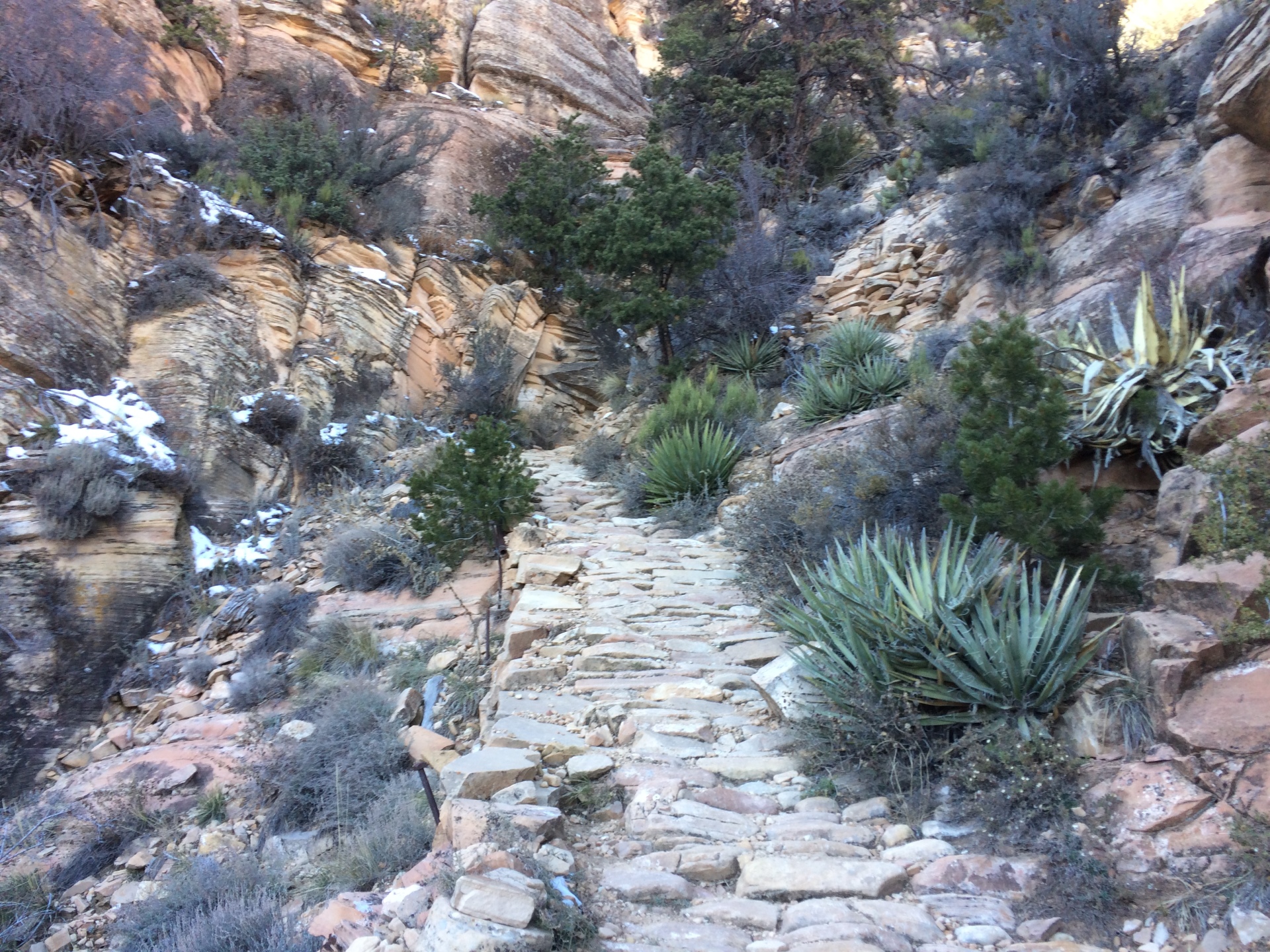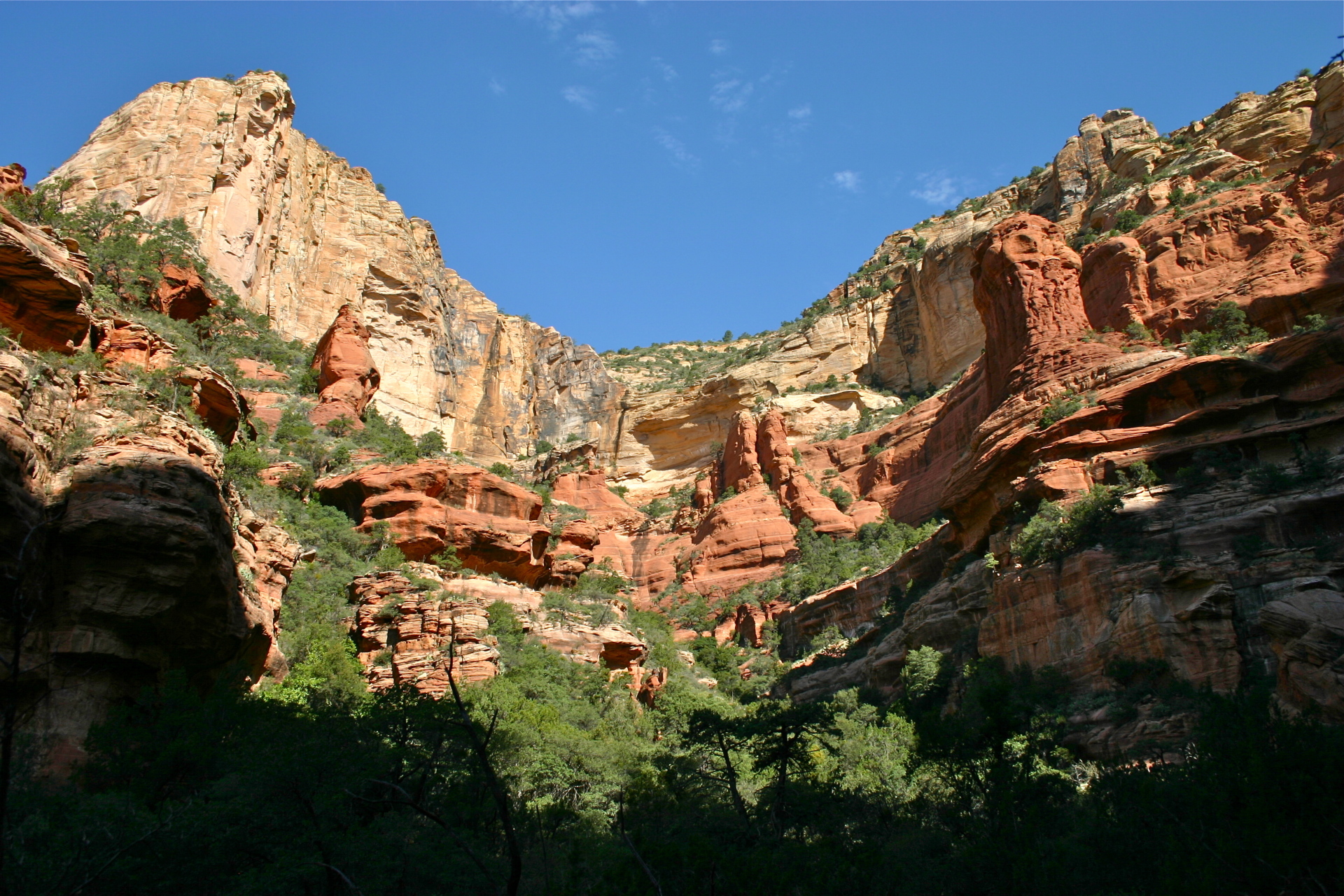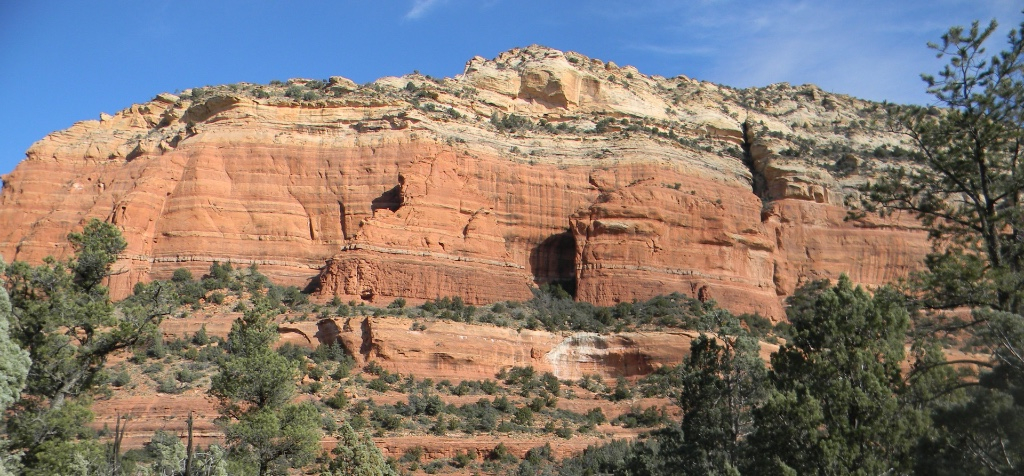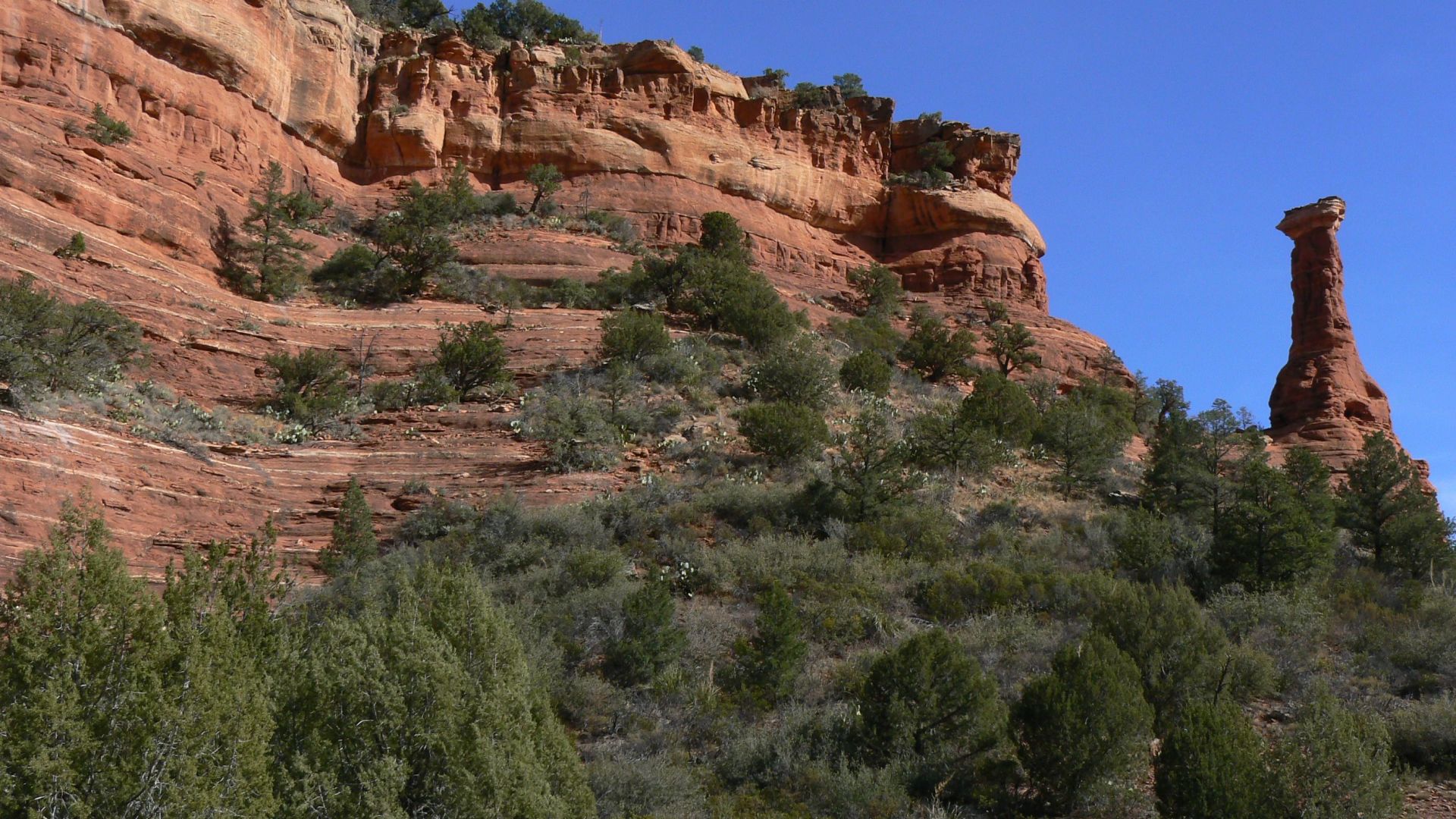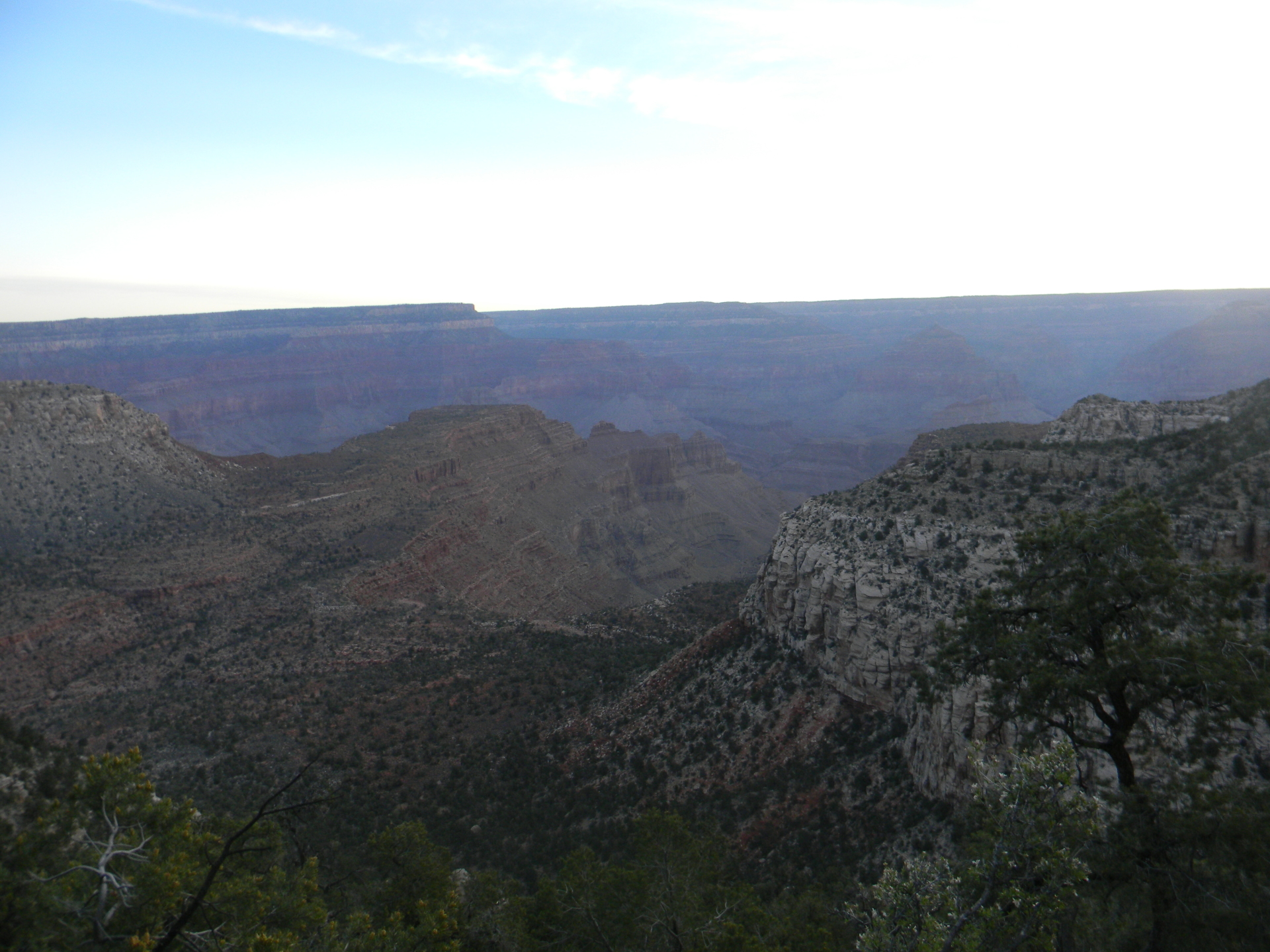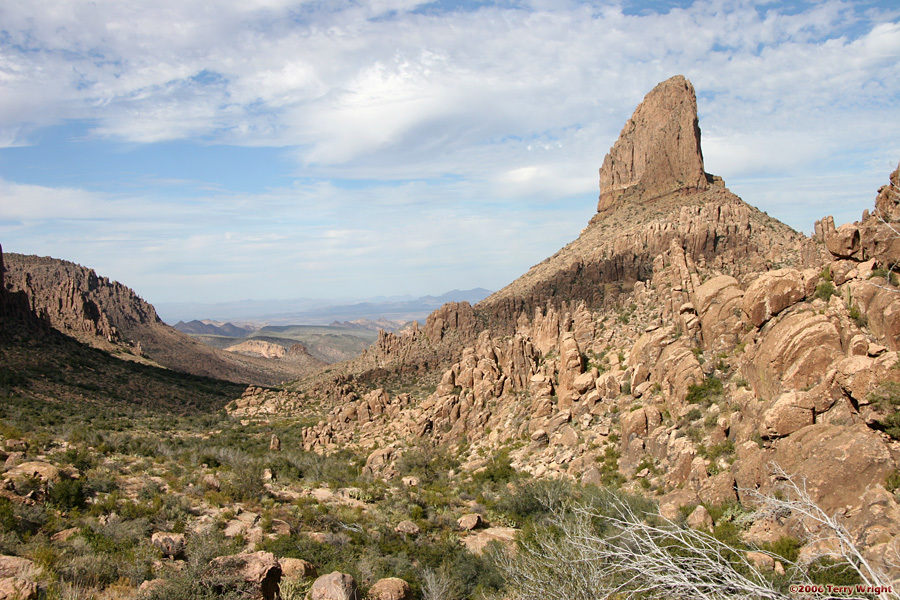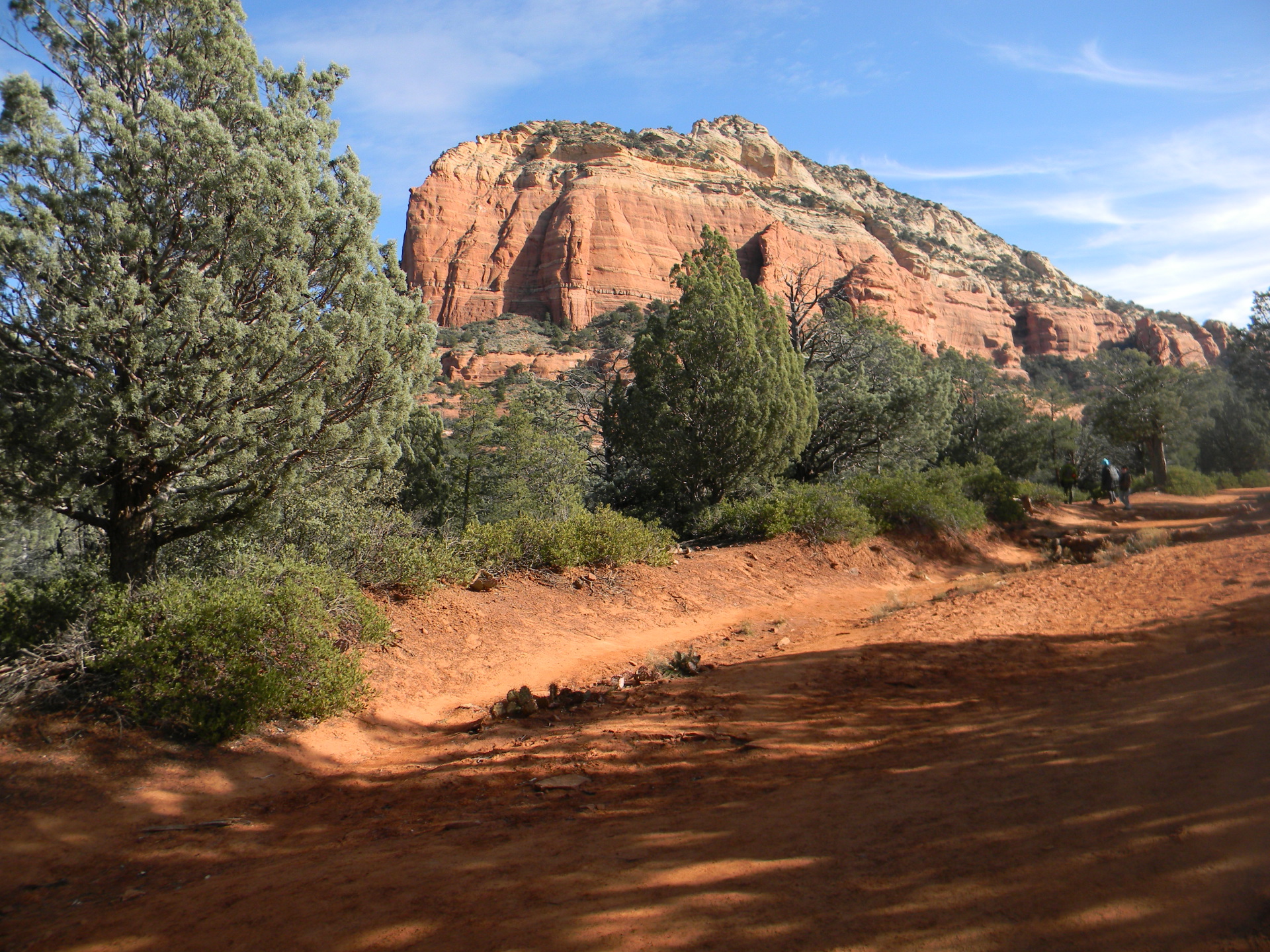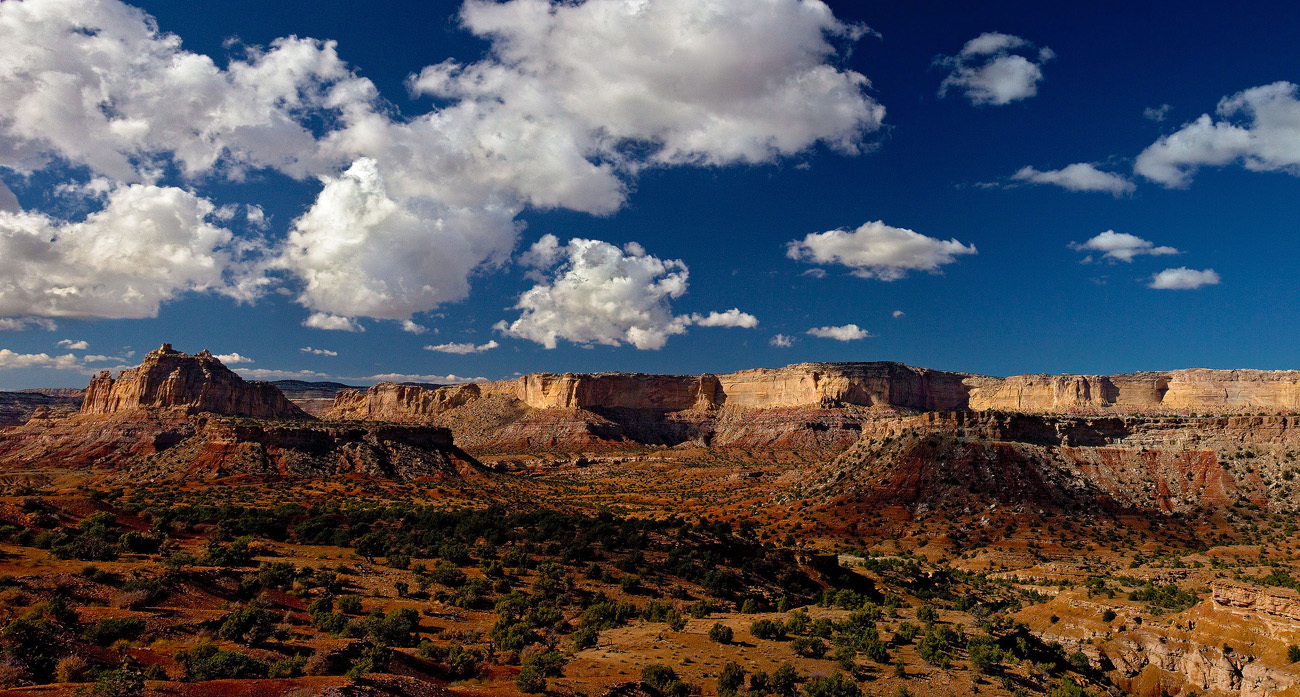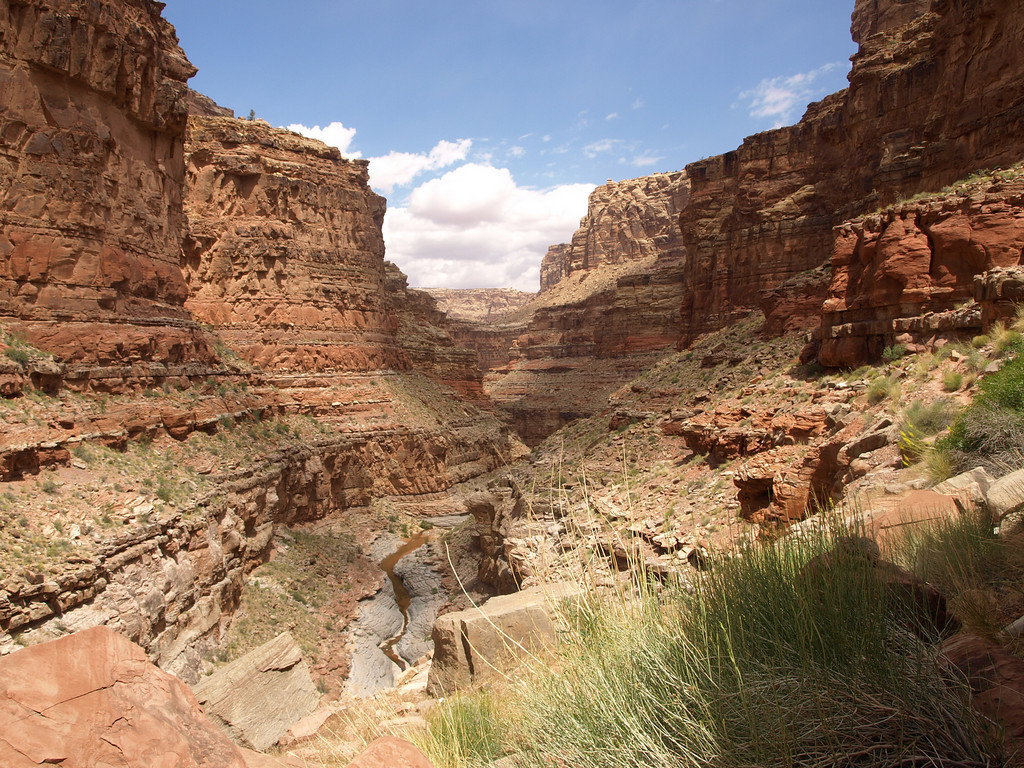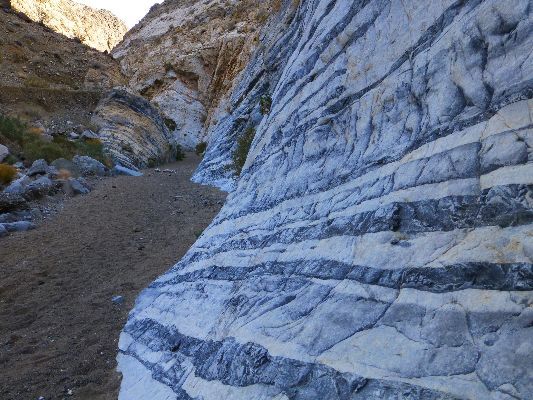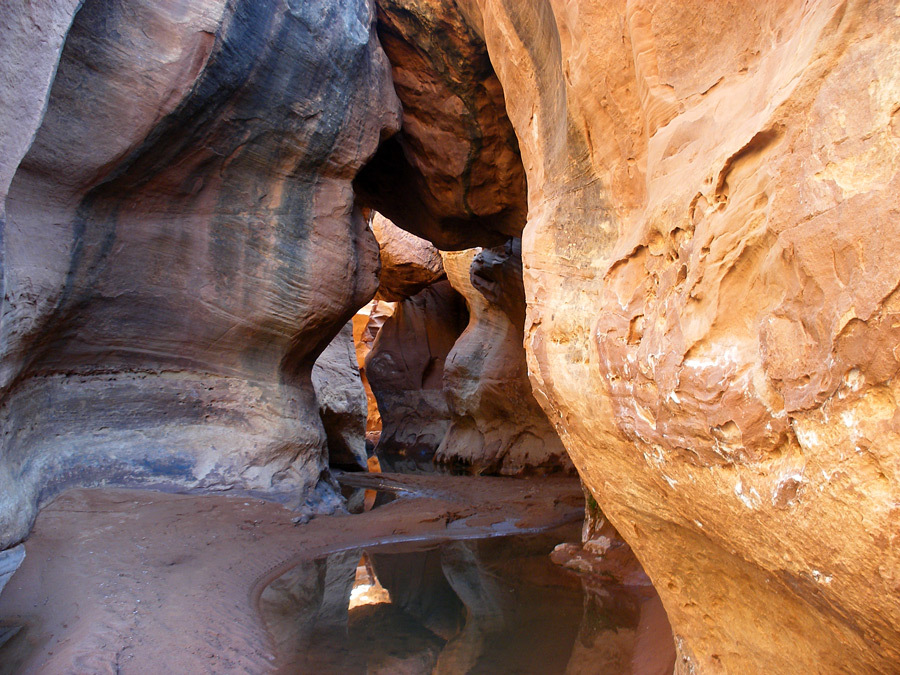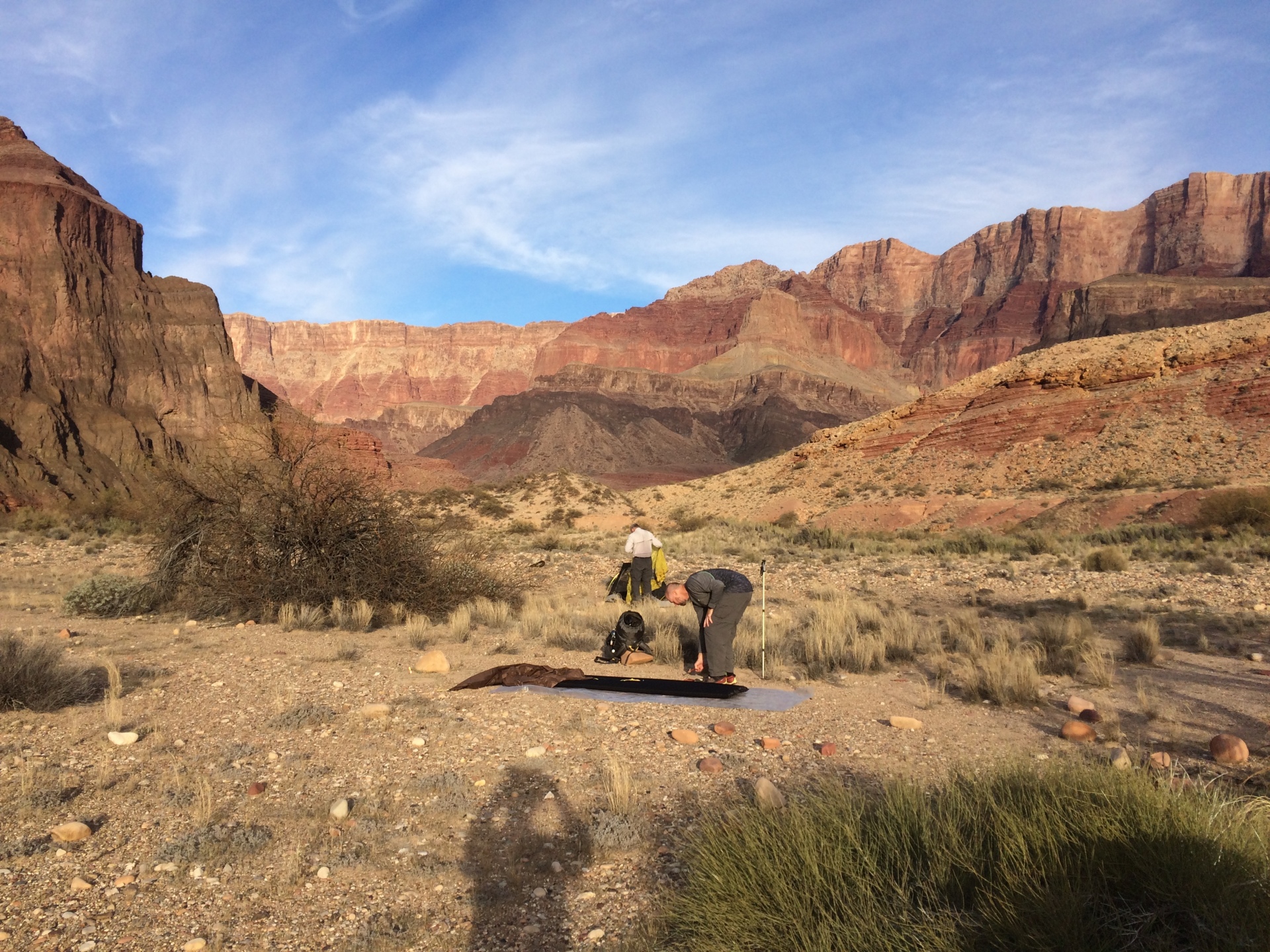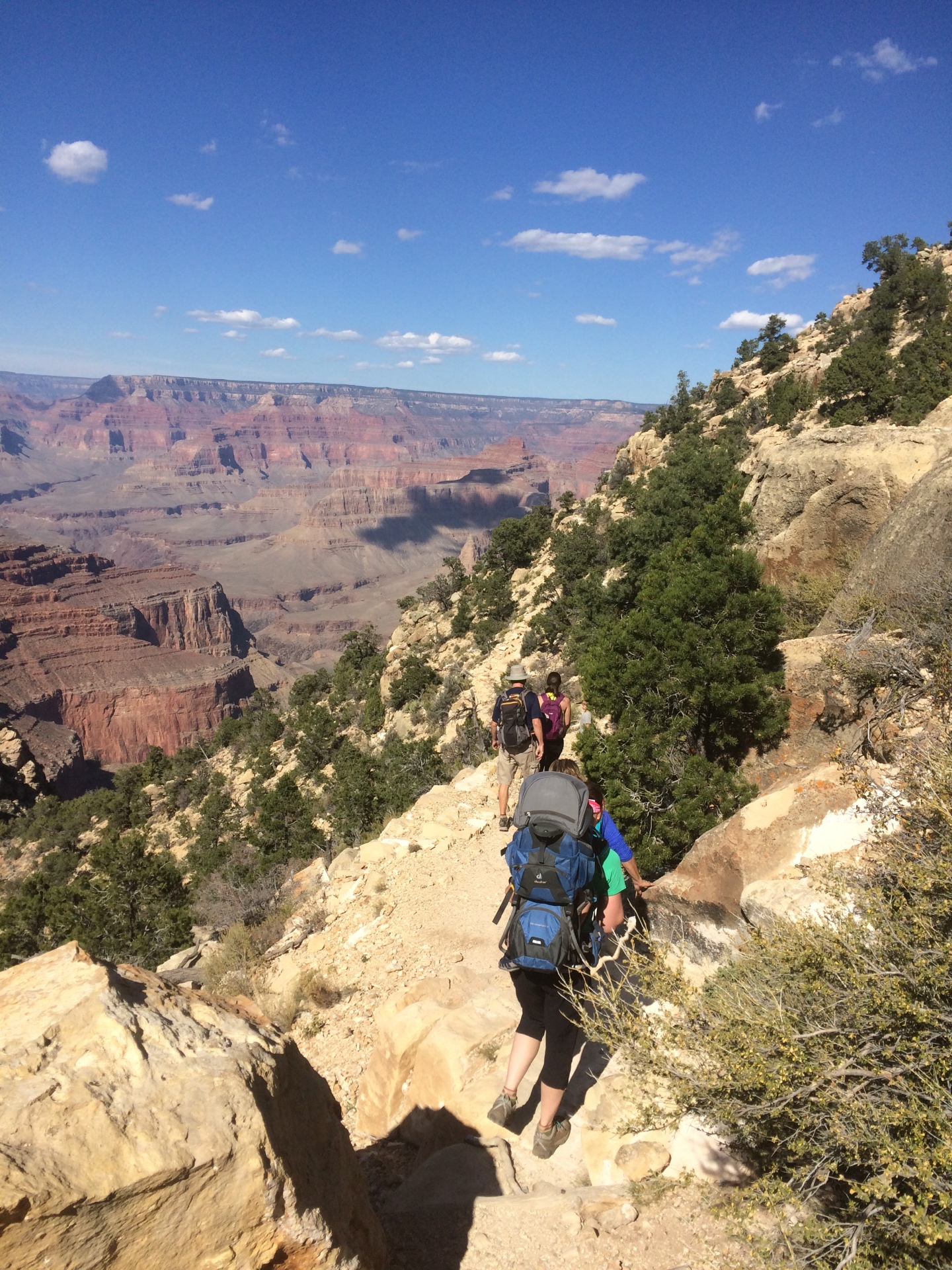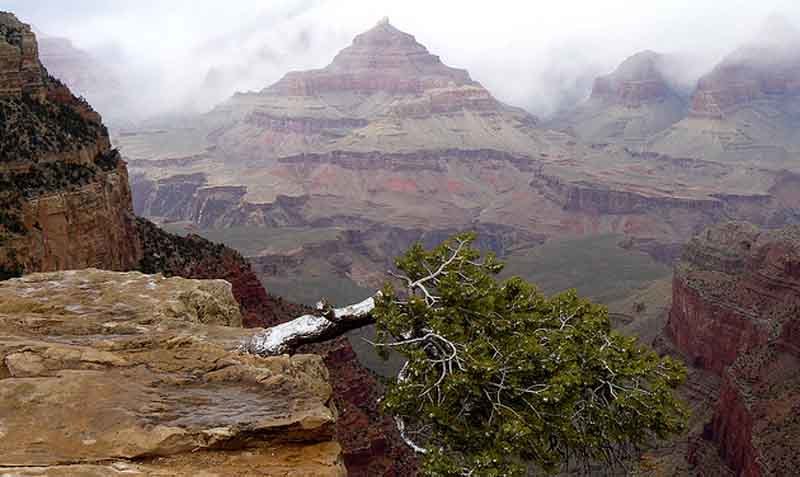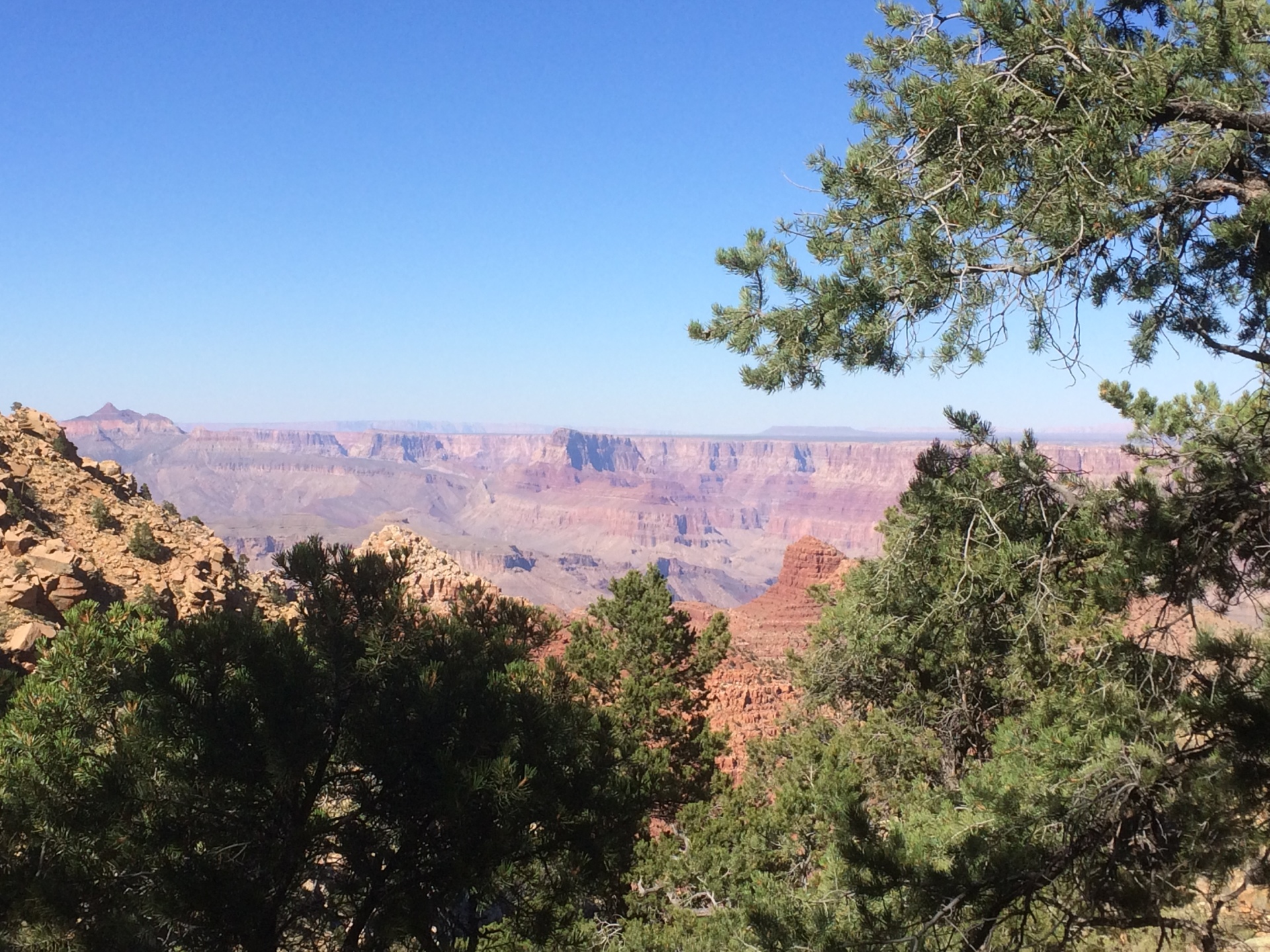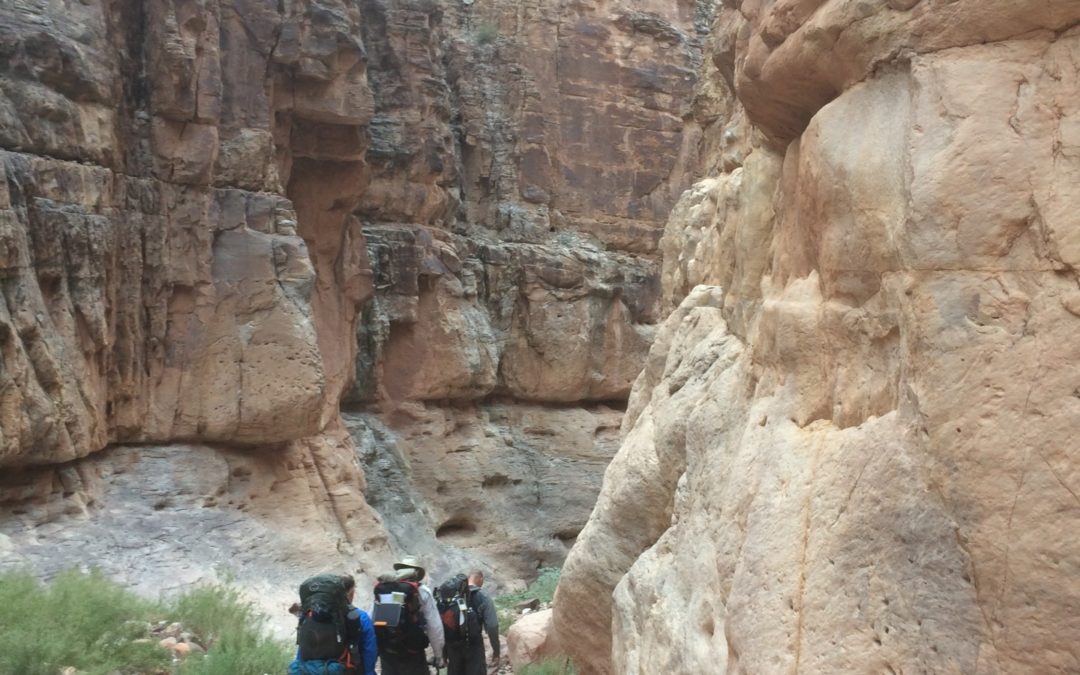
by The Goat | Aug 27, 2019 | Grand Canyon, Hiking
Backpacking the Escalante Route in Grand Canyon
Grand Canyon is a place of limitless wonder and hiking adventure. However, some adventures stand above the rest. The Escalante Route, the winding and spectacular overland route that leads from Tanner Beach to the Tonto Trail, is unequivocally one of the premier backpacking routes in the Grand Canyon, if not the United States or perhaps even the world. In fact, The Escalante Route was named one of “The Top 10 Backpacking Trips of a Lifetime” by Backpacker Magazine in 2012. Backpacking the Escalante Route give the Grand Canyon hiker everything they could want in a single backpacking or hiking adventure in this epic place, and here we will give you five of the most compelling reasons to put this trip on your “must-hike” life list.
1. Remote Solitude
The Escalante Route requires a fit hiker that has experience in Grand Canyon. It also requires at least 4 days to complete, with many people opting to stretch it into even a 5 or 6 day trip. It fits into Grand Canyon’s “primitive” and “threshold” zones, meaning that it steers clear of most of the Grand Canyon’s most popular, or “corridor” areas. All these factors combine to keep the crowds away, and it is unlikely that you will see more than even a small handful of other hikers on this route. Grand!
2. Epic and Unique Geology
On stunning display during your hike linking the Tanner Trail and Grandview Point, are two of the Grand Canyon’s most important and fabulous geologic features: The Great Unconformity and the Butte Fault. In addition, your traverse down to Tanner Beach in the wide open eastern portion of Grand Canyon is markedly different from Inner Gorge experiences further to the west, as the sediments of the Great Unconformity prevail here instead of the much more resistant metamorphic rocks of the famed Granite Gorge. This provides unfettered and dramatic vistas to the Palisades of the Desert, and an almost alpine mountain-like feeling of scale that is unique to this part of Grand Canyon.
3. Stunning Views
Well, after all, it is The Grand Canyon. Stunning views are just part of the epic experience on the Escalante Route, but as mentioned before, the views seen while hiking here are quite unique to the eastern portion of Grand Canyon, as wide-open spaces dominate the topography, and the hiker will be treated to a nearly Rocky Mountain-esque sense of space and scale.
4. Grand Canyon Mining History
During the later portions of your hike to Grandview Point and the South Rim, you will pass by one of the largest and most profitable mining operations in Grand Canyon’s history. You will be treated to old mining equipment, the mine shaft itself, inscriptions on the walls by the men who toiled in its depths, the natural spring where they got their water, and a true sense of human ingenuity and endeavor as you contemplate the thought and work that went into even conceiving of such an operation. As a bonus, you can hunt for excellent Copper minerals such as turquoise, malachite, and azurite.
5. Incredibly Diverse Adventure
Backpacking the Escalante Route will give you all you can handle in the Grand Canyon, both as a hiker and explorer. You will spend a night on the beach, skirt through a spectacular slot canyon carved into quartzite, make a class 3 scramble up the famed 50 foot Papago Wall (with a backside descent that is not for the faint of heart or weak of foot), gorge in outrageous views of the Colorado River, drink from flowing natural springs, and of course revel in your insignificant size in the depths of this Grandest of Canyons.
For more information on hiking the Escalante Route in Grand Canyon, contact us, or reserve your spot and come with our excellent geologist/guides as we delve into the geology, history, and grandeur of this once-in-a-lifetime adventure!
Going Guided
Hiking and exploring Grand Canyon, or any of the National Parks, is a special experience. Although it is possible to see these places yourself, hiring a guide is a great idea. For instance, guiding services provide logistical support, and plan everything for your best possible trip. They provide a great safety net on the trail, and are trained in backcountry medicine. Above all, they provide a depth of knowledge of the region that turns a walk into a true adventure.
Blue Marble Adventure GeoTourism provides all of the support you need, and pairs that with expert geologist/guides. Our backcountry meals use fresh ingredients, and are planned by a professional chef. Furthermore, we provide top-of-the-line gear and passion for the places we explore. In conclusion, you can visit National Parks, but going with a guide can create and even more memorable experience. Don’t be shy, and call us!
Read our blog!
For adventure hiking vacations in a geologic time machine, see our epic tours in Grand Canyon, Utah, and Arizona!
For geological musings read The Goat’s geology blog.
Follow us on Facebookand Instagram
Explore Further, Be Wild, See Through Time — Blue Marble Adventure GeoTourism
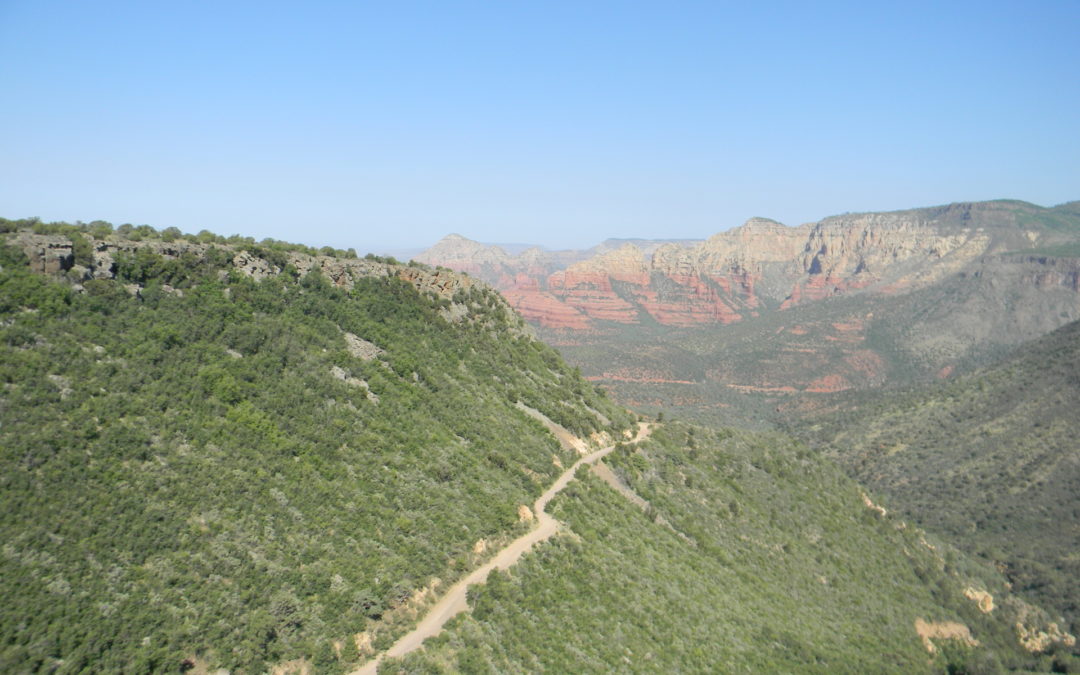
by The Goat | Aug 27, 2019 | Hiking, Sedona
Everything you need to know for Hiking in Sedona
Every year, thousands of people flock to the iconic red rock formations of Sedona, Arizona. They come from all over the state, all over the country, and all over the world to view and embrace the world famous vistas, world-class hiking, and spiritual zen that makes Sedona so famous. The views here are spectacular, the hiking, mountain biking, rock climbing, and outdoor adventure limitless, the geology almost confrontational, and the scale grand. But what should you, the savvy adventure traveler, know before you come to this iconic destination? The Goat is here to help you have the best time possible in this epic red rock getaway, including the best trails, the secret spots, and of course, how to make it back in one piece.
Location:
Sedona is located in the Arizona Transition Zone, about 1.5 hours north of Phoenix in Central Arizona.
Sedona can be approached from any direction, but the most scenic routes are from the north or the east. From the north, take Route 89A south from Flagstaff and wind your way through world famous Oak Creek Canyon. This drive is particularly spectacular in the fall, when the aspens, oaks, and willow trees are in full color. Approaching from the east on AZ SR 179 gives you an immediate and full introduction to Sedona’s famous red rocks, as you will see several of the most famous rock formations including Cathedral Rock, Courthouse Butte, and the Mogollon Rim. Take I-17 north from Phoenix and head west on SR 179.
Local’s Secret: Approaching via Schnebly Hill Road is truly the way to go, provided you have a capable (preferably high-clearance 4×4) vehicle. From Interstate 17, take the Schnebly Hill Road exit, and enjoy the backside approach and spectacular views.
Seasons:
Sedona is classified as high desert, with mild winters, hot summers punctuated by rainstorm events known as monsoons, and arid climate vegetation such as cactus, piñon pine trees, manzanita, ocotillo, and yellow marigold. The premier seasons to hike here are September-June, as summer temperatures on the trail can routinely exceed 100 degrees in the middle of the day.
Local’s Secret: Sedona, and its neighbor Oak Creek Canyon, have hikes for all seasons. Oak Creek, in particular, stays cool and shady when it’s too hot to hike in Sedona. Check out West Fork of Oak Creek Canyon Trail, it’s one of the best in the country!
Terrain:
Sedona and Oak Creek Canyon have highly variable terrain, ranging from flat and easy canyon hikes to strenuous mountain climbs and just about everything in between. The soil here is quite rocky, as are most of the trails, so most hikes in Sedona or Oak Creek will require at least some sturdy athletic shoes. In many cases, trails in Oak Creek cross the water, so be aware of the trail you are about to embark and bring the proper footwear.
Summer Activities:
Here is a small sampling of the great activities to engage in while visiting Sedona in the warm months (May-September)
- Hiking – Be sure to get an early morning, or evening start to avoid mid-summer temps
- Mountain Biking – Sedona has world-class sandstone mountain biking trails
- Rock Climbing – Oak Creek Canyon has some of the best technical routes in the state
- Camping – Check out the Forest Service for group sites
- Horseback Riding – Saddle up!
- 4×4 Tours – There are many excellent and adventurous Jeep trails in the surrounding area
- Helicopter Tours – Should the mood strike you, a Red Rock Heli Tour may just hit the spot
- Wining, dining, and exploring the towns of Oak Creek and Sedona
- Kayaking – The Verde River offers some of the most scenic and relaxing paddling in the southwest
Fall/Winter/Spring Activities
When temperatures cool off, there is even more to do in Sedona and Oak Creek!
- Hiking – If there is no snow, winter hiking in Sedona is a must!
- Rock Climbing – Cooler temps open many of the classic routes in Sedona’s red rock country
- Mountain Biking – the wet and cooler temperatures make winter mountain biking a blast in Sedona
- Yoga Retreats
- Wining, Dining, and exploring the towns of Oak Creek and Sedona
For more information about hiking and adventuring in Sedona and Oak Creek, give us a call! Our geologist/guides will be happy to show you around, and point you in the right direction!
Want to know more about our Guided Sedona Hiking Tours?
Going Guided
Hiking and exploring Sedona is a special experience. Although it is possible to see these places yourself, hiring a guide is a great idea. For instance, guiding services provide logistical support, and plan everything for your best possible trip. They provide a great safety net on the trail, and are trained in backcountry medicine. Above all, they provide a depth of knowledge of the region that turns a walk into a true adventure.
Blue Marble Adventure GeoTourism provides all of the support you need, and pairs that with expert geologist/guides. Our backcountry meals use fresh ingredients, and are planned by a professional chef. Furthermore, we provide top-of-the-line gear and passion for the places we explore. In conclusion, you can visit National Parks, but going with a guide can create and even more memorable experience. Don’t be shy, and call us!
Read our blog!
For adventure hiking vacations in a geologic time machine, see our epic tours in Grand Canyon, Utah, and Arizona!
For geological musings read The Goat’s geology blog.
Follow us on Facebookand Instagram
Explore Further, Be Wild, See Through Time — Blue Marble Adventure GeoTourism
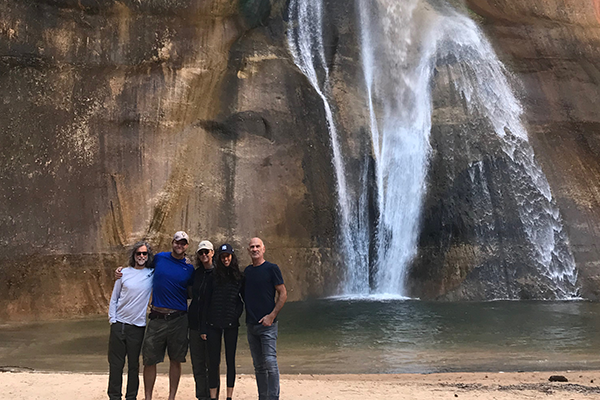
by The Goat | Aug 27, 2019 | Backpacking, Grand Canyon, Grand Staircase-Escalante, Hiking, Sedona, Utah Canyon Country
Top 5 Basecamping Trips in the Southwest
Basecamping can provide a truly wonderful experience that explores the best of both worlds in the outdoors: excellent hiking adventures by day, and comfortable accommodations by night. Hiking in the southwestern United States provides the adventurer with endless opportunities to see outrageous and iconic scenery, experience world-famous geology, and enjoy the whimsical color tapestry that pulls at the senses. The Goat has decided to let you in on his personal favorite hiking and camping adventures in the American Southwest, so load the car, strap in, and grab the camera ’cause we’re going outside!
5. Death Valley National Park and Mojave National Preserve, California
Though just the name evokes a barren wasteland of intense heat and suffering, long-time westerners know that Death Valley is one of the most fabulous places on the face of the Earth. It is a land of extremes, but one of those extremes is intense beauty. Being in Death Valley confronts the hiker with the dichotomy of life itself, in one breath being the lowest, hottest place in North America, in the other breath being a place with 11,000 foot mountains that receive feet of snow every winter.
In one breath being a howling desert, in the other being a place with flowing natural springs and over 1,000 different species of animal, including several like the Devil’s Hole Pupfish, that are indigenous to Death Valley and only Death Valley. To the east of Death Valley lies the Mojave National Preserve, a little-known slice of desert heaven that holds its own distinctions.
Think the largest, densest stand of Joshua Tree, icon of the Mojave, lies in Joshua Tree National Park? Think again. That belongs to Mojave National Preserve. Think the tallest sand dune in the United States lies in Great Sand Dunes National Park? Think again. Kelso Dune, which rises nearly 900 feet above the desert floor reigns supreme, right in the heart of the Mojave National Preserve. Death Valley and the Mojave National Preserve is a southwestern adventure that is not to be underestimated in its grandeur, taken for granted in its diversity, or passed up by the outdoor adventurer.
4. North Rim, Grand Canyon National Park, Arizona
The visitation to Grand Canyon is well-documented. Last year alone (2015) Grand Canyon National Park received over 6 million visitors for the first time in its history, breaking the string of a decade at over 5 million. To say it is well-loved is a bit of an understatement, and for good reason; It’s the Grand Canyon. However, over 90% of people that visit Grand Canyon visit the easily accessible South Rim, and only 5% of total people that visit actually go below the rim, given that the average visit time to this fabulous natural wonder is about 2.5 hours.
This leaves us with the isolated, lonely North Rim. Grand Canyon’s North Rim, which soars to over 8,500 feet on the Coconino Plateau, sees about 1/10 of the visitors that flock to the South Rim; good news for you. From the North Rim, hikers and campers are treated to all the dramatic vistas, epic geology, and fantasy of the Grand Canyon, but with a sense of solitude that can be hard to bargain for at the South Rim. North Rim contains some of the park’s most thrilling hiking adventures, outrageous fall colors, and even brings a sense of the pioneer spirit to any of its adventures.
3. Superstition Mountains, Arizona Sonoran Desert
Some say it’s the views. Some say it’s the ancient spirits. Some say it’s the lost gold mine. The Goat says he’s just lucky. The Superstition Mountains, located just 45 minutes east of the heart of Phoenix, Arizona, provide some of the best hiking, backpacking, and camping opportunities near a large metropolitan area in the United States, and perhaps the world. Hiking and exploring this fantastic wilderness from a basecamp, however, may just be the best way to see it.
Legend has it that within the Superstition Mountains lies an incredibly rich gold mine, the likes of which Arizona has never seen. The Dutchman, Mr. Jakob Waltz (who was actually German) gave clues on his deathbed as to its whereabouts, but it has yet to be located. Camping near the wilderness and tackling its hundreds of miles of excellent trails gives the outdoor adventurer a wonderful opportunity to search high and low, through deep canyons to 5,000 foot peaks. Meanwhile, sweeping views, excellent and explosive geology, and in the heart of the wilderness, solitude await as you dive deep into the legends and lore of the fabulous Superstition Wilderness.
2. Sedona, Arizona Red Rock Country
Sedona is world famous for its grand red rock monoliths, spiritual healing power, and upscale tourist traps. However, we geologists think of Sedona as the “Pangean Riviera”, as the beautiful rocks here tell a wonderful story of a paradise by the sea.
Though it’s lost its ocean views over the eons, Sedona is still one of the most gorgeous places in the American Southwest, and a base camping trip here will give the intrepid hiker and explorer all they can handle, from rugged red rock cliffs and world-class rock climbing, to intimate canyons, to soaring spires and outrageous sunsets whose colors can only be matched any the rocks themselves!
1. Capitol Reef National Park and Grand Staircase-Escalante National Monument, Utah Canyon Country
This tour de force of South Central Utah’s two epic parks will forever change your vision of what Utah’s Canyon Country is truly all about. Think you’ve seen it all? We think you’ve seen almost nothing until you behold the majesty contained within Capitol Reef and the Grand Staircase. Capitol Reef, home to the largest geologic structure in the southwest, harbors towering sunset red cliffs, arches, canyons, and utter solitude, with some of the best star-gazing in the lower 48. Grand Staircase is home to some of the most rugged, thrilling, and scenic canyons and slots on the Colorado Plateau and the entire world.
Placing your basecamp near the town of Boulder, Utah will lend you, the intrepid hiking adventurer, an opportunity to ping-pong between these two giants. The close proximity, beauty, and above all the unspoiled wilderness experience you are highly likely to obtain in these two outstanding places was the deciding factor in our countdown. The Goat approves!
So there you have it ladies and gentleman, the Top 5 Camping and Hiking Trips in the American Southwest. You can tackle them yourself, or to enhance your experience, you may choose to tackle them with our fabulous geologist/guides that will school you on every whit and whimsy in these beautiful rocks. See you on the trail!
Going Guided
Hiking and exploring Grand Canyon, or any of the National Parks, is a special experience. Although it is possible to see these places yourself, hiring a guide is a great idea. For instance, guiding services provide logistical support, and plan everything for your best possible trip. They provide a great safety net on the trail, and are trained in backcountry medicine. Above all, they provide a depth of knowledge of the region that turns a walk into a true adventure.
Blue Marble Adventure GeoTourism provides all of the support you need, and pairs that with expert geologist/guides. Our backcountry meals use fresh ingredients, and are planned by a professional chef. Furthermore, we provide top-of-the-line gear and passion for the places we explore. In conclusion, you can visit National Parks, but going with a guide can create and even more memorable experience. Don’t be shy, and call us!
Read our blog!
For adventure hiking vacations in a geologic time machine, see our epic tours in Grand Canyon, Utah, and Arizona!
For geological musings read The Goat’s geology blog.
Follow us on Facebookand Instagram
Explore Further, Be Wild, See Through Time — Blue Marble Adventure GeoTourism
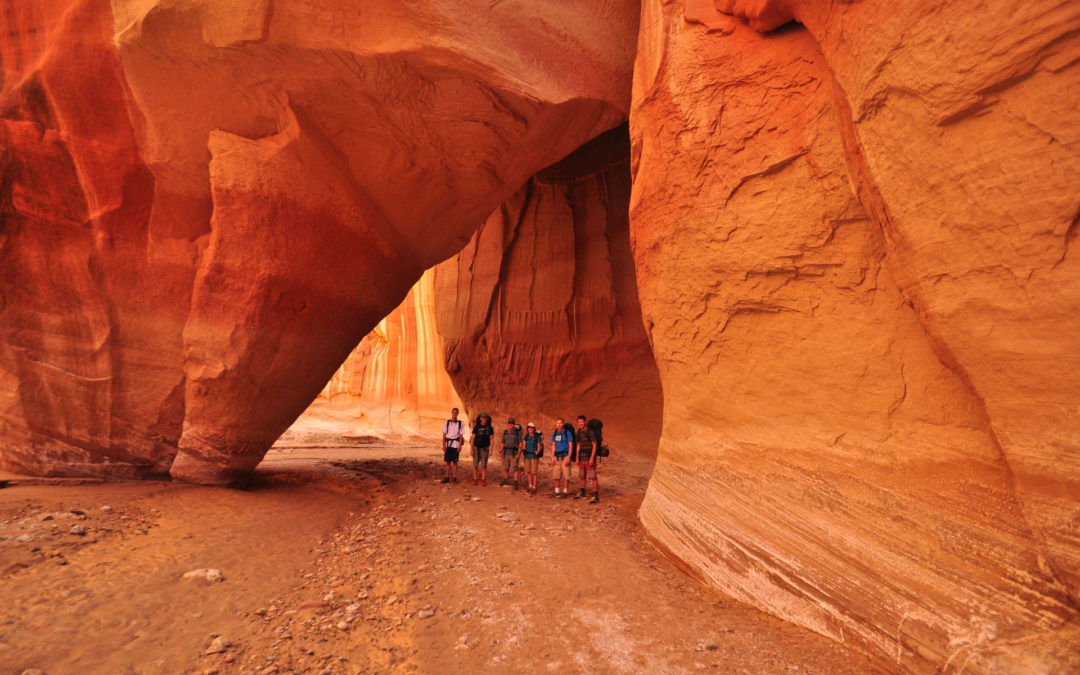
by The Goat | Aug 27, 2019 | Backpacking, Bears Ears, Grand Staircase-Escalante, Hiking
Top 5 Backpacking Trips in the Southwest
The American Southwest is a veritable buffet of life-list adventures. From the tame to the rugged, there is something for everyone here. Whether you are hiking and backpacking in Utah, Death Valley, Grand Canyon, or the wild Sonoran Desert, The Goat has compiled his top 5 backpacking trips in the American Southwest just for you. Follow along with us as we take you on a dream tour of our epic backyard.
5. Bucksin Gulch to Paria Canyon, Vermillion Cliffs National Monument, Utah Canyon Country
Simply put, this is one of the finest canyon hiking experiences in the world. This 43-mile, multi-day point-to-point takes hikers through the longest, deepest slot canyon in North America (and perhaps the world) the Buckskin Gulch. Towering sunset sandstone walls lead you through this coursing labyrinth, crossing the Paria River over 50 times before it dumps you out at Lee’s Ferry, the official beginning of the Grand Canyon. Along the way hikers are treated to epic canyon scenery, including several soaring natural arches, waterfalls, natural springs, the dreaded “Cesspools,” and a pleasant grade that makes it easy to revel in the scenic and geologic wonders. Paria Canyon and Buckskin Gulch can be done separately, but it is The Goat’s preference to get them both done in this fabulous backpacking tour of quintessential canyon hiking.
4. Sundance Trail to Dark Canyon, Dark Canyon Primitive Wilderness, Utah Canyon Country
Potentially the best part of this fantastic hiking and backpacking experience in the depths of Utah’s Canyon Country is that you may have Dark Canyon all to yourself. Intrepid hikers will travel at least 2-3 hours in any direction across 4×4 roads just to reach the trailhead, which makes getting here a fabulous adventure in and of itself. Once here, Dark Canyon presents hikers with some of the most unspoiled scenery and geology in Utah and all of the American Southwest. Often referred to as “the Little Grand Canyon” due to its ever-changing hues and sheer cliff walls, Dark Canyon is one of the premier canyon hiking destinations in the United States. The Sundance Trail descends a particularly rugged and thrilling ridge down into the depths of Dark Canyon, and once there, gives nearly limitless opportunities for hiking into side canyons and tributaries, each more stunning than the last. The Sundance Trail can also serve as a simple day hike, but The Goat recommends at least two or more days in this outstanding Utah canyon wilderness.
3. Marble Canyon via Cottonwood Canyon, Death Valley National Park, California
Death Valley: hot, barren, and boring, right? Wrong. Death Valley is perhaps the most ecologically diverse and geologically astounding place in North America, and the Marble Canyon via Cottonwood Canyon backpacking route puts that on full display. Running natural springs surrounded by towering cottonwood trees? Check. Polished billion year-old marble? Check. Slot canyons? Check. Solitude? Check. Adventurous route-finding and scrambling? Double Check. Backpackers and hikers typically do Marble Canyon only, however, The Goat prefers to make the Cottonwood to Marble Canyon traverse via Dead Horse Canyon, a rugged and wild adventure that will truly give you appreciation for the grandeur and diversity of Death Valley.
2. West Canyon, Arizona Red Rock Country
West Canyon is regarded by many (including The Goat) as the finest slot canyon on the Colorado Plateau. It does not hold any particular distinction as far as length, depth, or width, but its scenery and slot canyoning experience is absolutely second-to-none. Backpacking through West Canyon, the hiker is almost immediately confronted with swimming opportunities, old hogans, several dry falls that require exciting scrambling, and all this within the first mile of the canyon. As the backpacking continues, the hiker will reach waterfalls, enormous and outrageous alcoves, and numerous opportunities for hiking into side canyons, ducking through thrilling narrows that often require a headlamp, and quintessential sunset sandstone walls that seem to bathe in the soft sunlight that reaches into the depths of the canyon. What really puts this adventure over the top, however, is the boat trip required to reach the canyon, making West Canyon a unique and powerful experience in Red Rock Canyon Country.
1. Tanner Trail to Grandview Point via the Escalante Route, Grand Canyon, Arizona
This is the #1 backpacking trip in the American Southwest for one simple reason: the ultimate combination of geology and scenery. As with any hike in the Grand Canyon, hikers are confronted with nearly 2 billion years of Earth’s history painted on the walls. However, on the Escalante Route, hikers and backpackers get up close and personal with two of the Grand Canyon’s greatest scenic and geologic features, the Great Unconformity and the Butte Fault. We’ll leave one of our geologist/guides to walk you through the finer points of these fabulous features, but let’s just say that they add a fabulous spice to this outrageously scenic hike that includes a class 3 scramble up the Papago Wall, delving into a slot canyon, camping at the beach, and utter solitude. The Escalante Route presents exciting challenges and sweeping grandeur, all in the eastern part of Grand Canyon before the Colorado River enters the Inner Gorge. This wide-open expanse will give you a true perspective on the grand scale of Grand Canyon, as you confront literal mountains within the canyon, all the way down to narrow slots and three separate Colorado River-side camps that do not disappoint.
So there you have it ladies and gentleman, the Top 5 Backpacking Trips in the American Southwest. You can tackle them yourself, or to enhance your experience, you may choose to tackle them with our fabulous geologist/guides that will school you on every whit and whimsy in these beautiful rocks. See you on the trail!
Going Guided
Hiking and exploring Grand Canyon, or any of the National Parks, is a special experience. Although it is possible to see these places yourself, hiring a guide is a great idea. For instance, guiding services provide logistical support, and plan everything for your best possible trip. They provide a great safety net on the trail, and are trained in backcountry medicine. Above all, they provide a depth of knowledge of the region that turns a walk into a true adventure.
Blue Marble Adventure GeoTourism provides all of the support you need, and pairs that with expert geologist/guides. Our backcountry meals use fresh ingredients, and are planned by a professional chef. Furthermore, we provide top-of-the-line gear and passion for the places we explore. In conclusion, you can visit National Parks, but going with a guide can create and even more memorable experience. Don’t be shy, and call us!
Read our blog!
For adventure hiking vacations in a geologic time machine, see our epic tours in Grand Canyon, Utah, and Arizona!
For geological musings read The Goat’s geology blog.
Follow us on Facebookand Instagram
Explore Further, Be Wild, See Through Time — Blue Marble Adventure GeoTourism
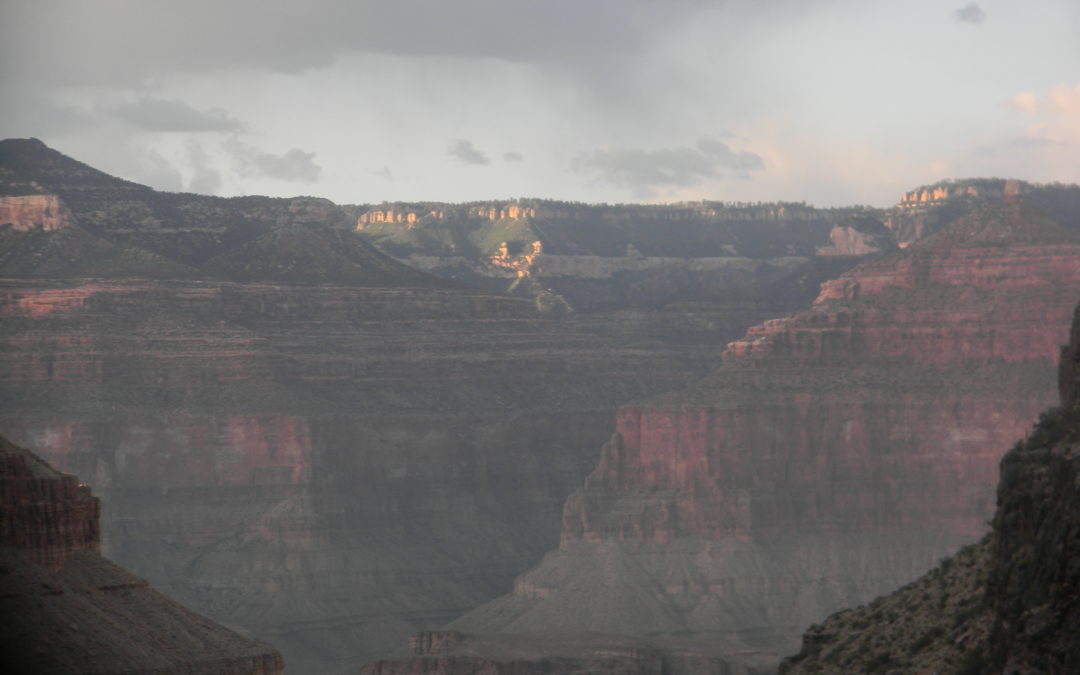
by The Goat | Aug 27, 2019 | Backpacking, Grand Canyon
Who is the Hermit of Grand Canyon?
Every trail in the Grand Canyon is unique and special, and the Hermit Trail is no different in that respect. Far enough from the park’s bustling corridor trails of Bright Angel and South Kaibab to yield a feeling of solitude, yet close enough that it has amenities and its own bus stop, this is The Goat’s favorite trail on the South Rim.
A view of Hermit Canyon coming down the Hermit Trail
The Hermit
Louis Boucher, better known as “the hermit of the Grand Canyon”, had a homestead here in the late 1800’s into the early 20th century, and built this foot-trail to access his mine. The trail, improved by the Santa Fe Railroad in the early 1900’s as a route for hopeful mining riches, also yields one of the park’s best day hikes; to Dripping Springs. This 6.5-mile out-and-back is a wonderful adventure for those looking to bite off a piece of the canyon, but not more than they can chew.
Our intrepid guests descending the Hermit Trail
The geology of this hike gives a unique perspective on how the canyon took shape over the eons, particularly how the colorful buttes and mesas that make the canyon so unique were formed. A process called “spring-sapping” is most responsible, and Dripping Springs allows its intrepid visitors to see firsthand how this process takes, and is taking place.
Dripping Springs
As groundwater is forced to the surface at permeable/impermeable geologic contacts, it creates weaknesses along bedding planes, mechanically weathering (eroding) at the surface. Over time, these areas break down and are subject to fallout. As they crumble, they leave behind the impressive buttes and mesas such as Zoroaster Temple, Chuar Butte, and Vulcan’s Throne.
Zoroaster Temple, product of “spring-sapping”
The spring itself is groundwater forced to the surface at the geologic contact between the permeable Coconino Sandstone, and the impermeable Hermits Shale. The water coursing its way through the sandstone hits the clay-based shale and can no longer matriculate downwards, so it is therefore expelled at the contact, creating the surface spring.
A view to the Esplanade from the Hermit Trail
Hiking Down the Canyon
On the way down to Dripping Springs, there are several other spots of tremendous geologic interest including a wall of fossils in the Kaibab Limestone, as well as reptile and amphibian tracks in the Coconino Sandstone. The best thing about this day hike is that, once you trudge through the Kaibab, Toroweap, and Coconino formations and reach the junction of the Dripping Springs and Hermit Trails, the trail levels out and is a wonderful cruise through the bright reds and oranges of the upper reaches of the Supai Group. A great lunch spot awaits the hikers while they watch the spring quite literally drip from the ceiling of the large Coconino Sandstone overhang.
Sweeping views of the “Grandaddy of Them All”
The return hike, while strenuous at times once you reach the Coconino and Kaibab switchbacks, is relatively easy compared to many Grand Canyon ascents, and an early start will ensure that you escape the late afternoon southern-exposed sun rays. The most enjoyable way to take this hike is, as always, with one of our geologist/guides; and we hope to see you on the trail soon!
Going Guided
Hiking and exploring Grand Canyon, or any of the National Parks, is a special experience. Although it is possible to see these places yourself, hiring a guide is a great idea. For instance, guiding services provide logistical support, and plan everything for your best possible trip. They provide a great safety net on the trail, and are trained in backcountry medicine. Above all, they provide a depth of knowledge of the region that turns a walk into a true adventure.
Blue Marble Adventure GeoTourism provides all of the support you need, and pairs that with expert geologist/guides. Our backcountry meals use fresh ingredients, and are planned by a professional chef. Furthermore, we provide top-of-the-line gear and passion for the places we explore. In conclusion, you can visit National Parks, but going with a guide can create and even more memorable experience. Don’t be shy, and call us!
Read our blog!
For adventure hiking vacations in a geologic time machine, see our epic tours in Grand Canyon, Utah, and Arizona!
For geological musings read The Goat’s geology blog.
Follow us on Facebookand Instagram
Explore Further, Be Wild, See Through Time — Blue Marble Adventure GeoTourism



